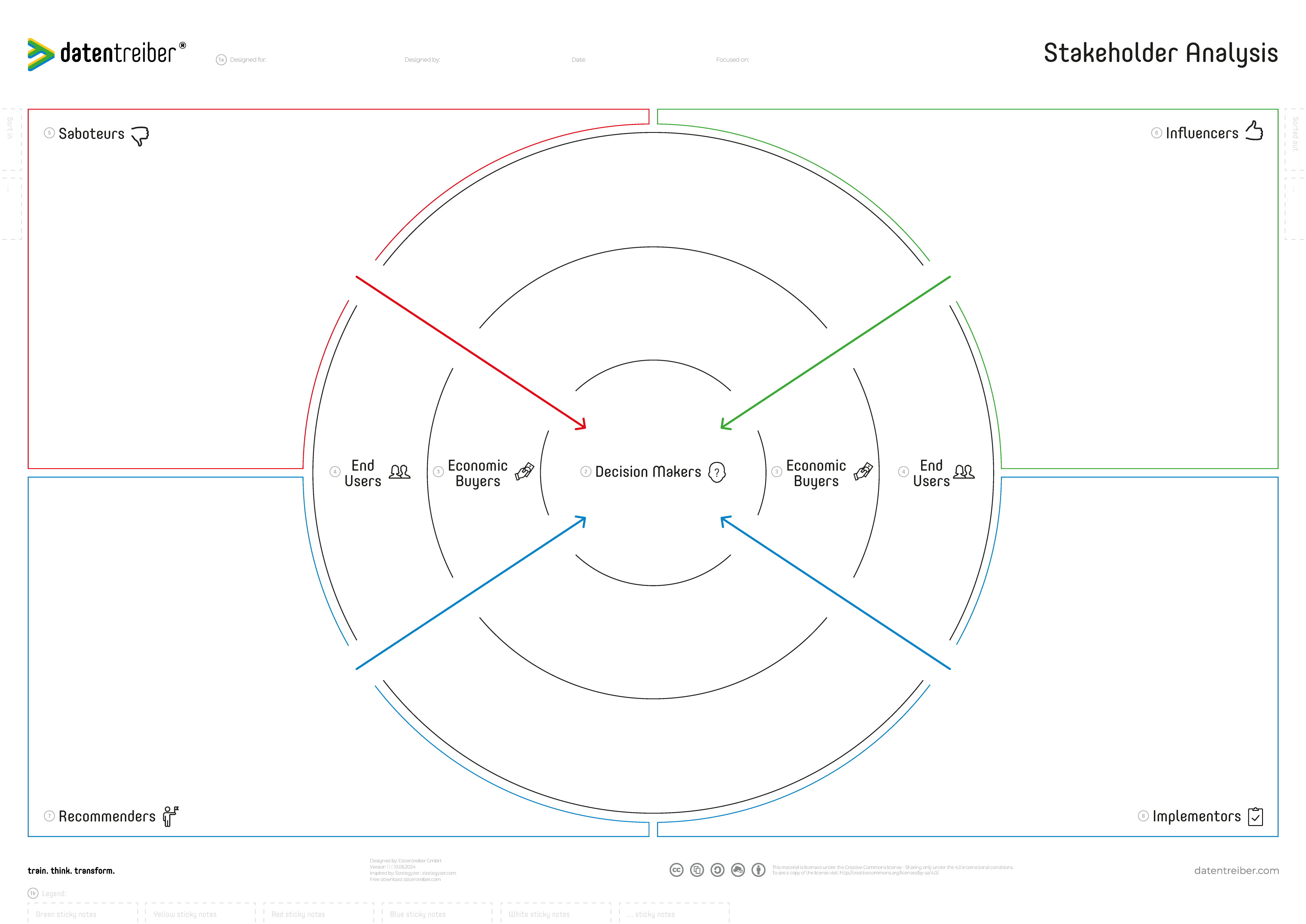
Stakeholder Mapping Made Simple
Stakeholder Analysis Canvas
Build diverse, effective teams and interdisciplinary workshops with the Stakeholder Analysis canvas. This tool helps you identify, categorize, and align stakeholders for successful workshop and project execution and collaboration.
What is the Stakeholder Analysis Canvas?
The Stakeholder Analysis Canvas is a tool designed to identify and categorize all individuals and groups with a stake in a specific project, product, or service. By mapping out stakeholders and understanding their roles and influences, the canvas helps organizations gain clarity on who is involved and how they might impact the initiative.
This canvas focuses on defining stakeholders in specific roles:
- Decision Makers: Those with the authority to approve or reject aspects of the project.
- Economic Buyers: Individuals or entities who provide or control the budget.
- End Users: The people who will use or benefit from the product or service.
- Saboteurs: Individuals who may negatively influence the project or oppose it.
- Influencers: People who can positively sway opinions and support the project.
- Recommenders: Those who provide advice or recommendations to decision-makers or buyers.
- Implementers: Teams or individuals responsible for executing the project.
This canvas is handy for assembling diverse, interdisciplinary teams in workshops or strategic planning processes. By understanding these roles and ensuring the right mix of expertise and perspectives, the Stakeholder Analysis canvas enables organizations to tailor their strategies to engage each stakeholder effectively, anticipate challenges, and foster collaboration.
The Stakeholder Analysis Canvas is available for free under a Creative Commons license: you may use and modify the canvas as long as you cite Datentreiber in particular as the source.
When to Use the Stakeholder Analysis Canvas?
The Stakeholder Analysis Canvas is an essential tool for the following scenarios:
- Identifying Workshop Participants: Before conducting a workshop, use the canvas to determine who should participate. This ensures that all critical roles are represented, such as decision-makers, users, and implementers.
- Project Planning and Initiation: At the outset of a project, the canvas helps in mapping out all relevant stakeholders, allowing for better planning and resource allocation.
- Managing Stakeholder Relationships: Use the canvas to understand the interests and influence of different stakeholders, which aids in communication planning and expectation management.
- Mitigating Risks: By identifying potential saboteurs or individuals who might oppose the project, the canvas allows teams to address concerns proactively and reduce resistance.
- Team Composition Optimization: It can help to ensure the team is composed of “T-shaped” individuals—experts in specific domains with foundational knowledge across others—who can effectively bridge gaps between disciplines and functions.
How Do I Use the Stakeholder Analysis Canvas?
A stakeholder analysis identifies potential people, personas, or roles who have a stake (i.e., interest) in a particular project, product, or service.
This includes external (commercial) products or services, as well as internal projects, such as implementing business strategies, executing TOP (technological, organizational, or personnel) initiatives, or developing data and AI products.
The aim is to categorize stakeholders (e.g., into end users, economic buyers, decision makers, etc.) to better understand their interests and intentions, and to anticipate their impact and influence.
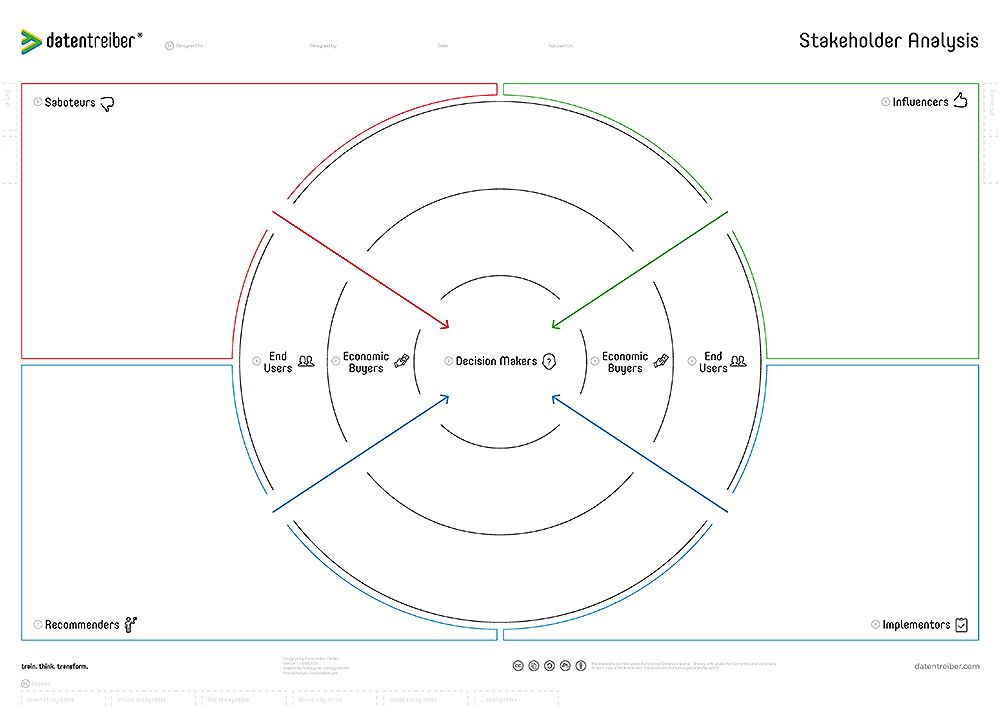
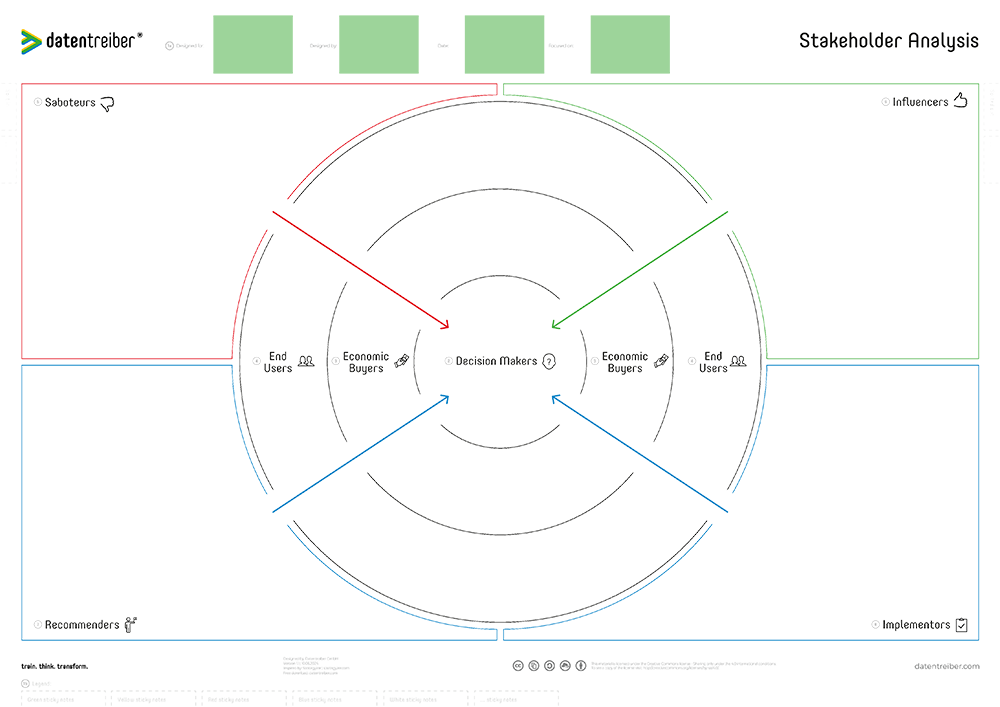
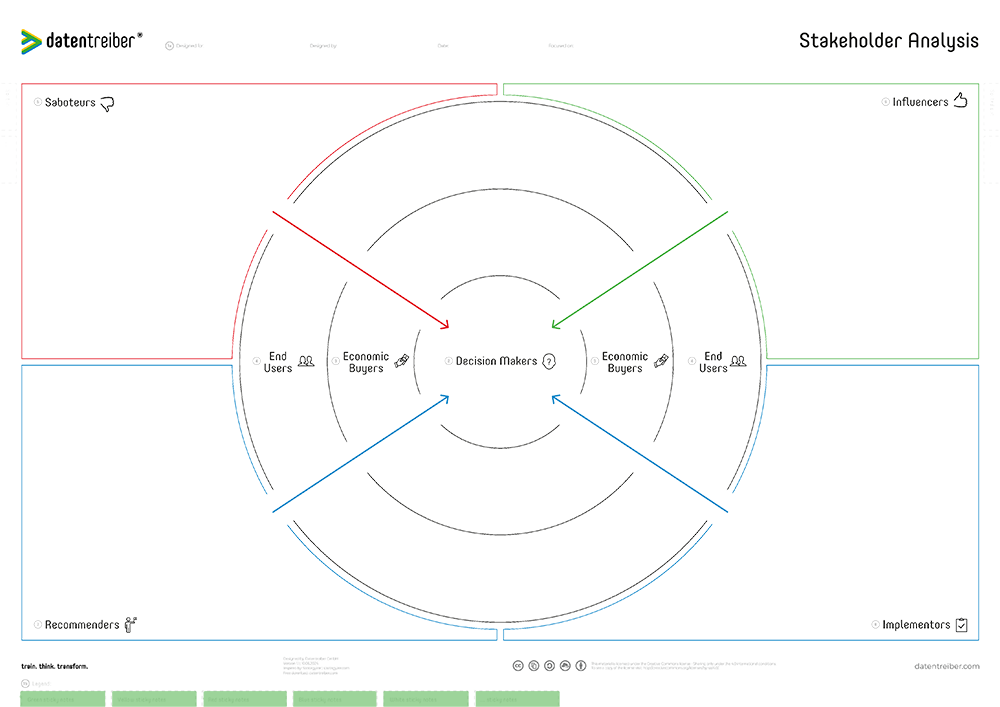
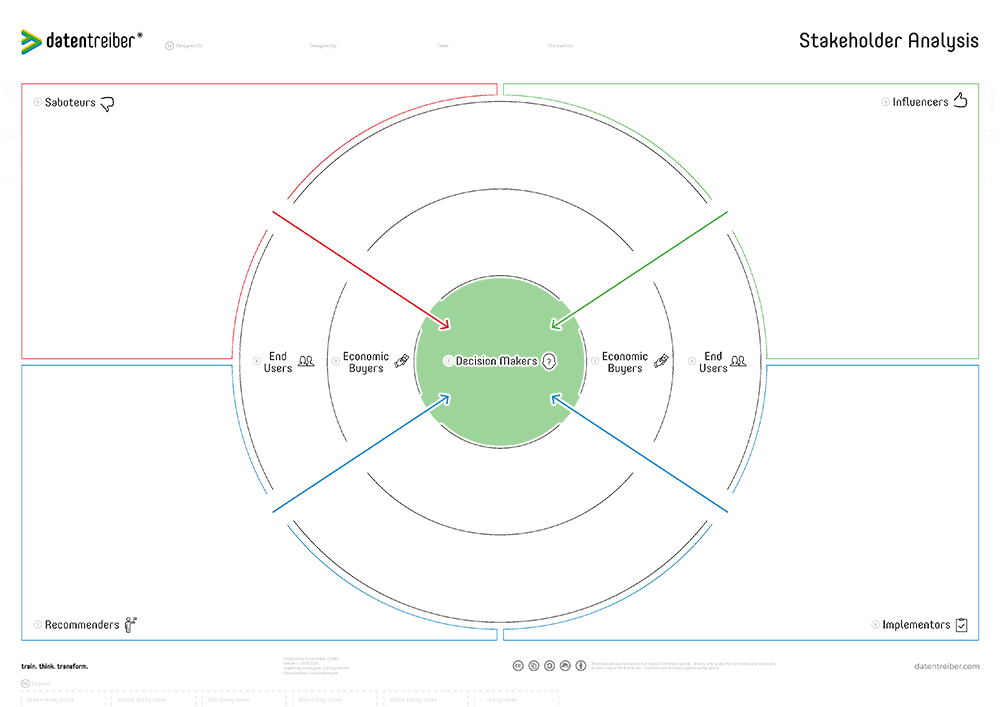
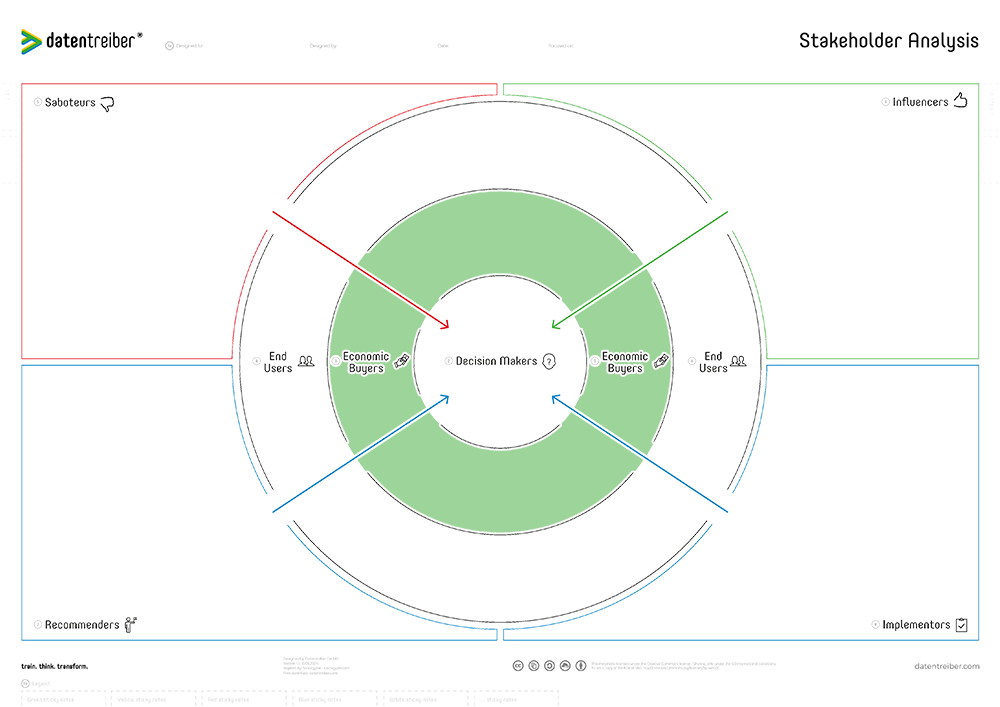
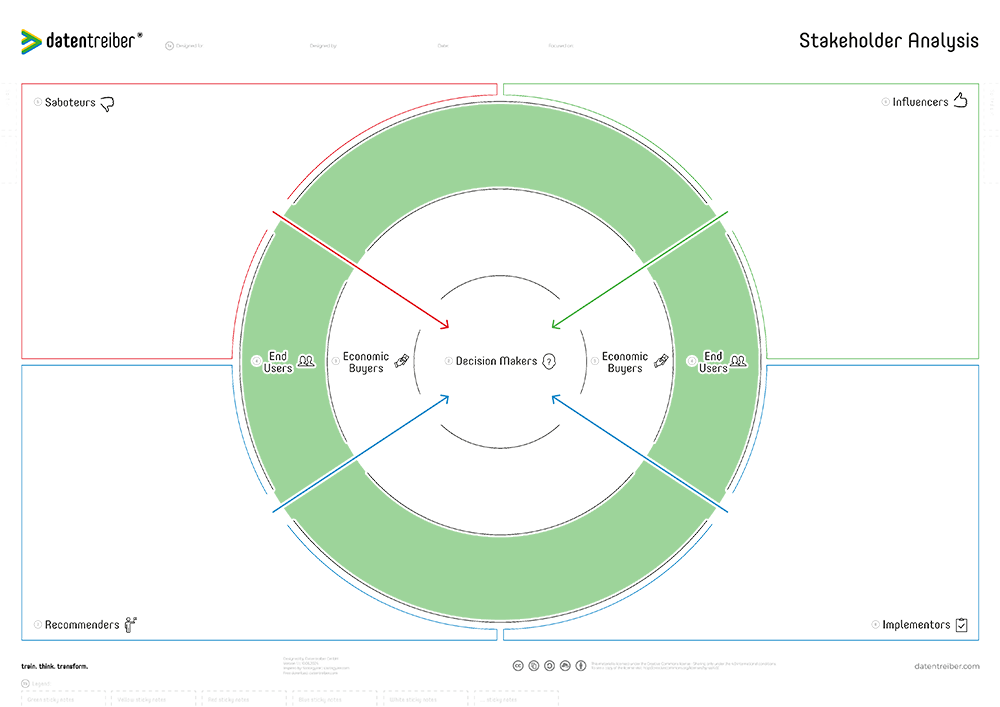

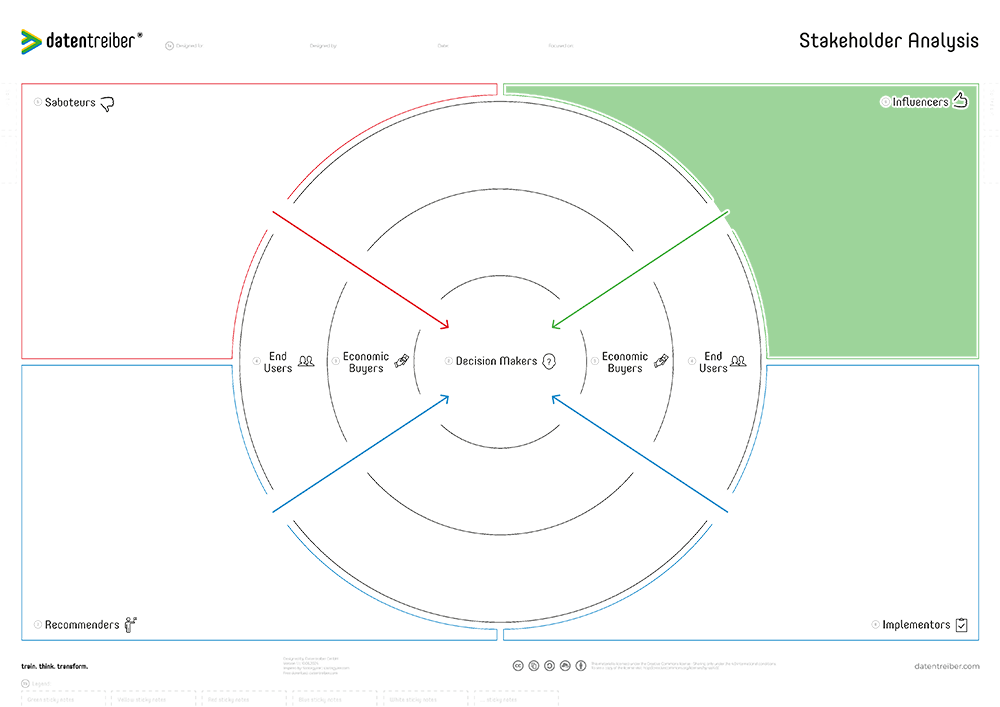
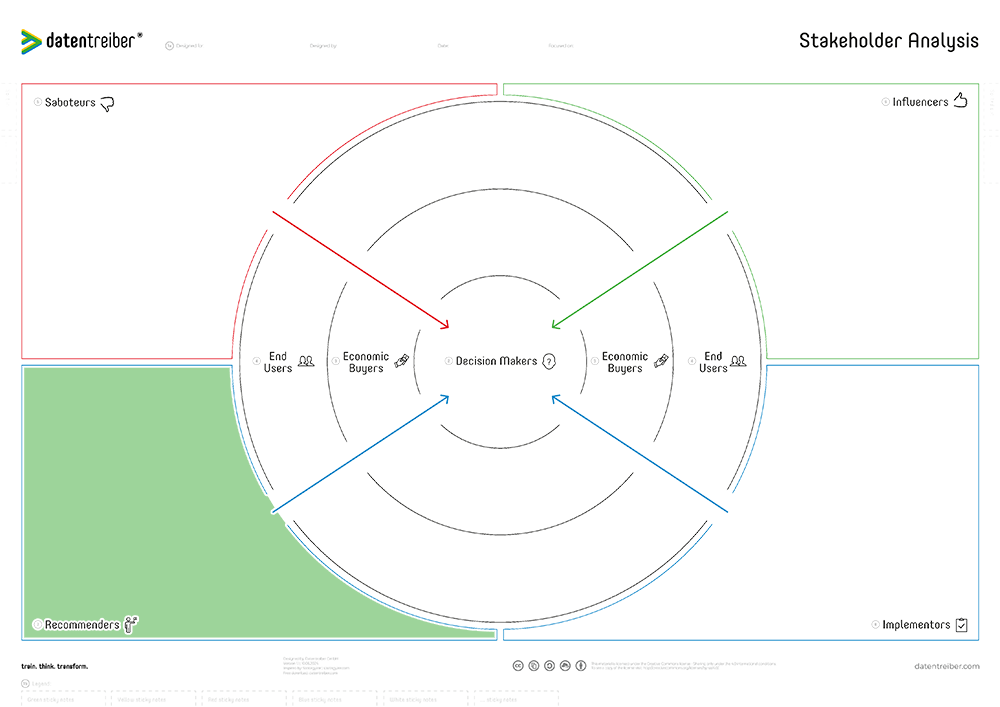
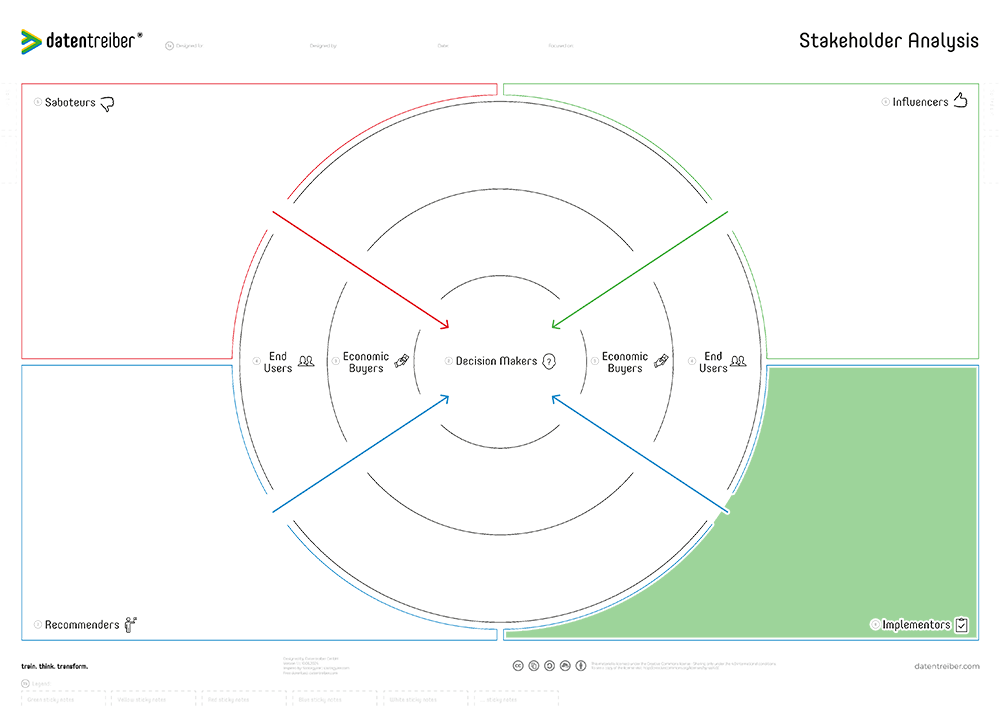
The Canvas Sections
①a Header

The header defines the content of the canvas and should consist of the following information:
- Designed for: Which organization (company, department, team, etc.) does the content of the canvas concern?
- Designed by: Which organization (company, department, team, etc.) created the content?
- Date: When was the content created or last updated?
- Focused on: On which area/topic/case/etc. does the content of this canvas focus?
There should be no copies of the same canvas with identical headers, i.e., the header clearly identifies a version of the canvas (copy) and documents the current status of its content.
② Decision Makers

Who makes the general decision?
- For B2B business: Decision makers are those leading a department or the company. Because decision-makers are not domain experts per se, they rely on the information provided by the end users, the economic buyers, or recommenders.
- For B2C business: For example, parents are the decision makers for their young children.
③ Economic Buyers

Who provides or decides about the budget?
- For B2B business: Economic buyers are part of the sourcing organization or budget owners (sponsors). They are primarily concerned about economical factors.
- For B2C business: For example, parents pay for their kids.
④ End Users

Who is a user or beneficiary?
- For B2B business: The end users are the employees who use or benefit from the project, product, or service. For them, the value proposition is decisive.
- For B2C business: For example, the kids are the consumers.
⑤ Saboteurs

Who has a negative influence on end users, economic buyers, and/or decision makers?
Saboteurs may oppose a project, product, or service for subjective or objective reasons, such as negative past experiences.
To address a saboteur, it is important to understand their reasons and offer solutions.
- B2B Business: Colleagues who see their personal careers threatened might be saboteurs.
- B2C Business: Family members or work colleagues could have a negative influence.
⑥ Influencers

Who has a positive influence on end users, economic buyers, and/or decision makers?
Influencers advocate for a project, product, or service due to subjective or objective reasons.
They can be particularly helpful, especially as a counterbalance to saboteurs, if they feel listened to and appreciated.
- B2B Business: Colleagues who indirectly benefit or external domain experts.
- B2C Business: Friends or celebrities.
⑦ Recommenders

Who recommends decisions to the end users, economic buyers, and/or decision makers?
Recommenders provide additional information and recommendations either in favor of or against a project, product, or service.
They can be convinced through professional reasoning and reliable information:
- B2B Business: Specialized departments such as IT or a Business Intelligence unit, as well as external consultants or service providers.
- B2C Business: Consumers may seek advice from industry experts or existing users and buyers.
⑧ Implementers

Who implements the project, product, or service? Implementers are responsible for executing a project, implementing the product, or providing the service.
They can also handle partial tasks, supply product parts, or act as subservice providers.
- B2B Business: Specialized departments like software development or an AI factory unit, as well as external service, solution, or tool providers.
- B2C Business: Specialized craftsmen, for example, often handle installation or integration tasks.
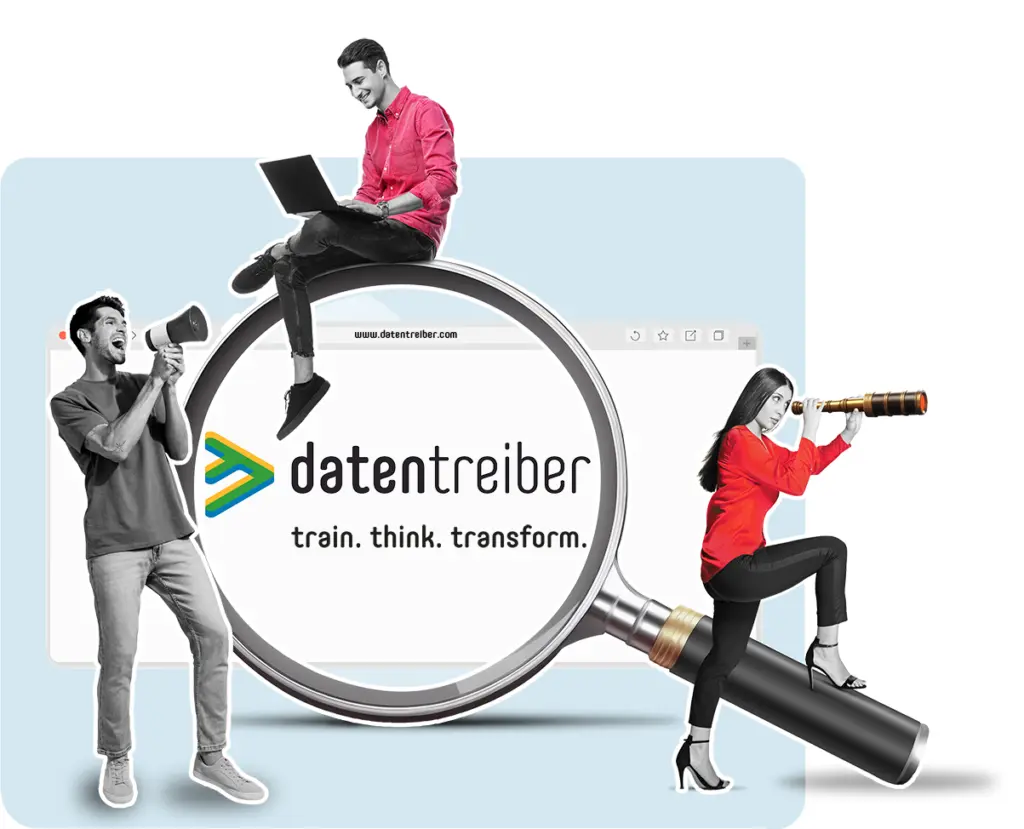
Where Can I Find More Information?
- Find detailed tutorials and examples on how to use the canvas in the context of designing a fully integrated data & AI strategy in our Data & AI Design Bench.
- The Stakeholder Analysis Canvas is inspired by the reading of the “Business Model Generation” book.

